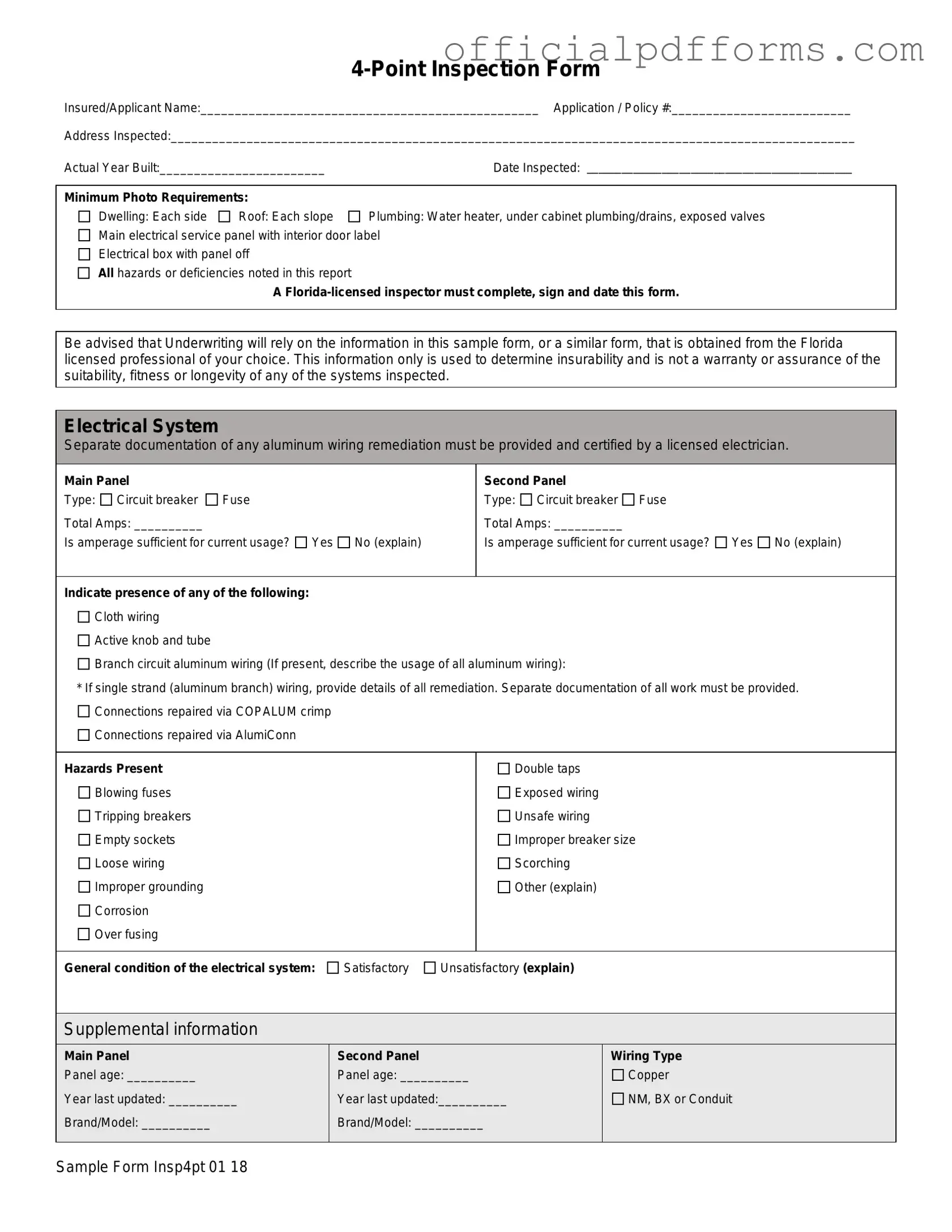A 4 Point Inspection Form is a document used primarily in Florida to assess the condition of four key systems in a home: the roof, electrical system, HVAC (heating, ventilation, and air conditioning), and plumbing. This form is often required by insurance companies to determine a property's insurability. It must be completed by a licensed Florida inspector who will evaluate each system for any visible hazards or deficiencies.
Only a Florida-licensed inspector can complete the 4 Point Inspection Form. Acceptable professionals include general contractors, residential contractors, building code inspectors, and home inspectors. Each inspector must sign and date the form, certifying that the information provided is accurate. It is important to note that trade-specific professionals may only sign off on the section relevant to their expertise.
The form requires specific photos to accompany the inspection report. These include:
-
Each side of the dwelling
-
Each slope of the roof
-
Water heater, under cabinet plumbing/drains, and exposed valves
-
Main electrical panel with the interior door open
-
Electrical box with the panel off
-
Any noted hazards or deficiencies
These photos help provide a visual reference to support the inspector's findings.
What happens if a system is found to be unsatisfactory?
If any of the four systems are deemed unsatisfactory, the inspector must provide detailed comments regarding the issues. This includes any visible hazards or deficiencies, such as leaks, corrosion, or improper installations. Insurance agents are responsible for reviewing the form and ensuring that applications for coverage are not submitted if any system is not in good working order.
No, the information provided in the 4 Point Inspection Form does not serve as a warranty or assurance regarding the suitability or longevity of the systems inspected. It is solely used by underwriters to evaluate the insurability of the property. Homeowners should still conduct regular maintenance and inspections to ensure their systems remain in good condition.
The 4 Point Inspection Form plays a critical role in the insurance application process. Underwriters rely on the information provided in the form to assess risk and determine whether to offer coverage. If any systems are found to have deficiencies, the application may be denied, or coverage may be limited. It is essential for homeowners to address any issues noted in the inspection before submitting their application for insurance.
